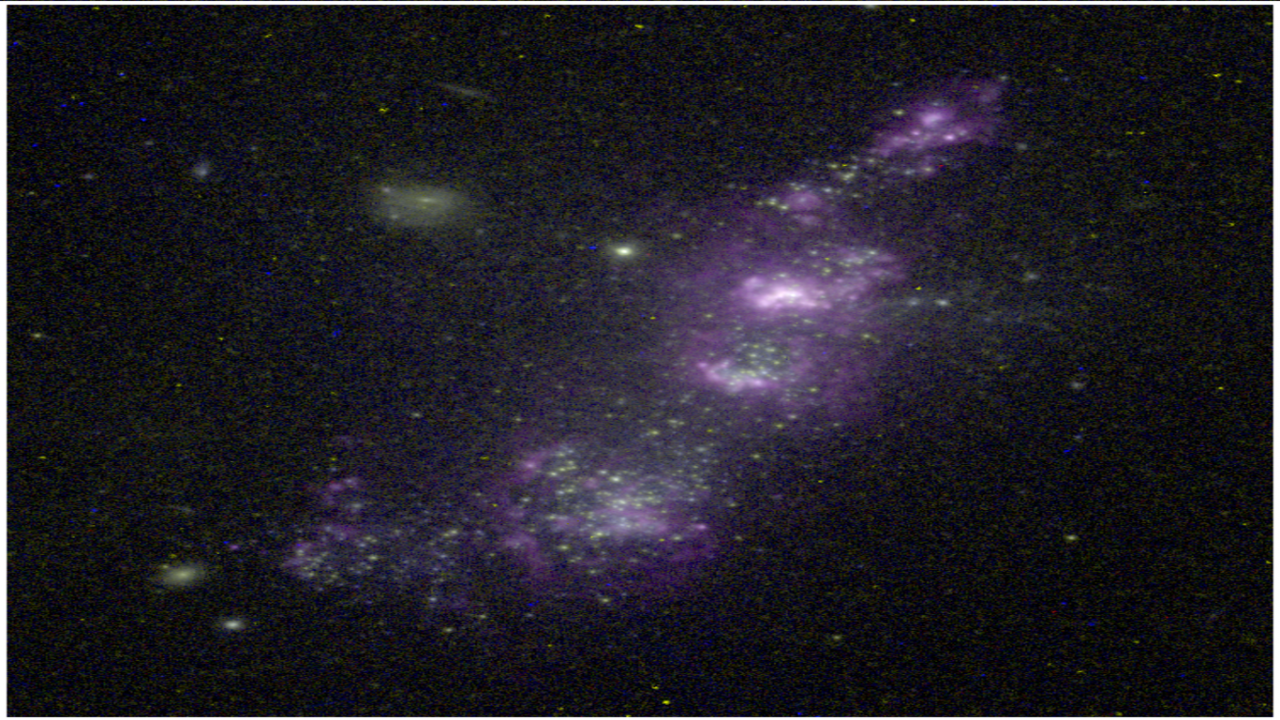Subvenciones relacionadas:
General
El proyecto interno GEFE está enmarcado en el proyecto coordinado, ESTALLIDOS, financiado por el plan nacional desde el año 2001. El ultimo proyecto aprobado es ESTALLIDOS 6.0 (AYA2016- 79724-C4-2-P). En el proyecto GEFE trabajamos en base al caso científico del proyecto ESTALLIDOS 6.0.
Los estallidos de formación estelar (Starbursts o SB) son clave la evolución de las galaxias y en la historia de formación estelar (FE) del Universo, la producción de metales, y en los procesos de retroalimentación que acoplan las galaxias con la red cósmica. Nuestro proyecto tiene como meta el estudio completo de la física de las regiones masivas del universo local, con objeto de entender el funcionamiento de las galaxias más lejanas y de los SBs más extremos. Combinamos estudios observacionales (usando telescopios terrestres y espaciales) con nuestros modelos teóricos. Entre las instalaciones que usaremos destacan los nuevos instrumentos de GTC, EMIR y MEGARA, en los que el equipo investigador participa y EMIR y MEGARA que entrarán en funcionamiento durante el periodo que cubre este proyecto.
Hemos estructurado nuestra investigación de los próximos tres años alrededor de cinco objetivos:
1) La interacción entre la FS masiva y el medio interestelar.
2) El gas en la formación de las galaxias disco.
3) El papel del entorno en la FS masiva y la evolución de galaxias.
4) Formación estelar en el Universo temprano.
5) Participación en la construcción de nueva instrumentación y en su verificación científica.
Los resultados que esperamos son: i) mejorar la comprensión de la evolución química de las galaxias usando datos de IFUs y modelos bi-dimensionales, ii) entender el papel del gas molecular y los fotones energéticos de fondo, iii) desarrollar una técnica para hacer imagen del gas de la red cósmica que alimenta la formación estelar en galaxias, iv) caracterizar las propiedades químicas y dinámicas del gas que cae sobre las galaxias, v) descifrar las distintas formas en las que fecta a la formación estelar a lo largo de la vida del Universo, prestando especial atención al disparo de la FE en las galaxias con menos metales, vi) explicar como SB masivos evolucionan en modo de 'positive feedback', para entender los SB extremos en el Universo primitivo, vii) estudiar la FS en galaxias Ly-alpha y Ly-break, viii) buscar candidatos a ser estrellas de población III en galaxias extremadamente pobres en metales, locales y a alto 'redshift', ix) desarrollar las técnicas que permitan un uso eficiente de EMIR y MEGARA. Lideraremos casos científicos en los que se usan estos instrumentos, tanto durante la fase de verificación como en su explotación posterior.
Miembros
Resultados
- Se ha descubierto la anticorrelación entre la tasa de formación estelar y la metalicidad del gas en discos de galaxias.
- Descubrimiento una galaxia de baja masa y alta metalicidad, que confirma la estocaticidad de la red cósmica alimentando la formación estelar.
- El polvo producido en las supernovas puede sobrevivir. Los resultados de las simulaciones podrian ser importantes para el universo primitivo.
- El survey SHARDs con sus filtros estrechos permite por primera vez identificar la muestra de galaxias emisoras en Lyman alfa y galaxias con continuo de lyman (lyman break). Se podra estudiar la evolucion entre clases.
- Se identifica un posible AGN binario en la galaxia Mrk 622


![Izquierda - Imagen RGB de la nebulosa de Orión y M43 obtenida filtros estrechos con la cámara WFC en el INT: H alfa (rojo), [S II] 6716+30 (verde), [O III] 5007 (azul). Derecha - Imagen en falso color de la nebulosa planetaria NGC 6778. En azul se ve la emisión en la línea de O II tomada con el filtro sintonizable azul del instrumento OSIRIS en el GTC; en verde imagen con el filtro estrecho de [O III] del Nordic Optical Telescope (NOT). Izquierda - Imagen RGB de la nebulosa de Orión y M43 obtenida filtros estrechos con la cámara WFC en el INT: H alfa (rojo), [S II] 6716+30 (verde), [O III] 5007 (azul). Derecha - Imagen en falso color de la nebulosa planetaria NGC 6778. En azul se ve la emisión en la línea de O II tomada con el filtro sintonizable azul del instrumento OSIRIS en el GTC; en verde imagen con el filtro estrecho de [O III] del Nordic Optical Telescope (NOT).](/sites/default/files/styles/crop_square_2_2_to_320px/public/images/project/imagen_web.jpg?itok=fsBmV9CO)
